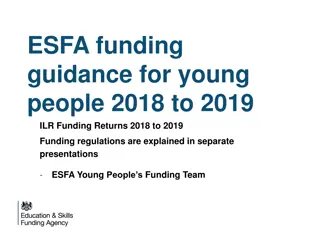Understanding Foundation Funding for Faculty Research
Explore the role of foundations in supporting faculty research, including basics of foundations, top science funders, types of foundations, what they fund, and how universities engage with them. Learn about the preferences and criteria of foundations in funding niche science projects. Gain insights into the leading foundations and their impact on research endeavors.
Download Presentation

Please find below an Image/Link to download the presentation.
The content on the website is provided AS IS for your information and personal use only. It may not be sold, licensed, or shared on other websites without obtaining consent from the author. Download presentation by click this link. If you encounter any issues during the download, it is possible that the publisher has removed the file from their server.
E N D
Presentation Transcript
NextProf Science 2016 Foundation Funding to Support Faculty Research Prepared by: University of Michigan Office of University Development -Foundation Relations Maureen S. Martin Executive Director martinms@umich.edu Allison McElroy Associate Director mcelroy@umich.edu 1
Overview 1. Foundation basics 2. What do they fund? 1. Top science funders 2. Engaging with foundations 2
The Basics: What is a foundation? A private charity established to make grants that meet a mission created in its chartering There are 87,142 foundations in the U.S. (as of 2013) Foundations granted more than $55 billion in 2013 The top 25 foundations (.03%) gave 23.5% of all funding nationally 3
Who leads? Bill & Melinda Gates Foundation Seattle, WA Assets: $41 Billion, Annual giving: $3.3 Billion Wellcome Trust* London, England Assets: $26 Billion, Annual giving: $1.2 Billion * historically funded only within UK; starting to make grants in the US Ford Foundation New York, NY Assets: $12.2 Billion, Annual giving: $560 Million Robert Wood Johnson Foundation Princeton, NJ Assets: $10.1 Billion, Annual giving: $337 Million W.K. Kellogg Foundation Battle Creek, MI Assets: $8.6 Billion, Annual giving: $294 Million William & Flora Hewlett Foundation Menlo Park, CA Assets: $8.6 Billion, Annual giving: $240 Million 4
Types of Foundations and how universities engage with them Legal Private Operating Community Distinctions Useful Distinctions Family Professional Corporate Behave like Individual Donors; usually managed by Major Gift Officers Industry support; usually managed by Corporate Relations staff Usually managed by Foundation Relations staff 5
Foundations are niche science funders What They Like What They Don t Like Establishing or operating centers Their own goals Student support* Innovation and risk Market-driven solutions Evidence of young investigator promise Publishing as the outcome Bold, active language *Other than students engaged in the work Creative or leading edge science Applied research While these are massive generalizations, they hold with most foundations. 7
Funding to Top Public Universities $200 Millions $180 $160 Total Annual Revenue from Foundations $140 $120 $100 Largest Funder 2nd Largest $80 3rd Largest $60 All Others $40 $20 $0 8
What Foundation Funding Offers Support for junior faculty in launching their careers Prestige junior and senior faculty awards: Keck, Sloan, Packard Support out-of-the-box ideas and high-risk, high-return projects Pilot or proof-of-concept funding Focus attention on a particular problem or disease (Cancer Society) 9
How are foundations different? Some are not peer-reviewed But program officers can be highly knowledgeable about program areas Exceptions can include foundations that fund research Strong focus on outcomes and impacts in their focus areas Does this help solve a problem of interest to the foundation? How does it contribute? What will be different? Focus on risky science Does the investigator show passion and promise? Does their research stand out from the crowd; have new approaches? Often a focus on underserved populations Gates: all people have the chance to live a healthy and productive life. Kresge: expand opportunities for low-income people 10 One-Time Funding Pilot or launch (1-3 years), not sustainable funding.
Why Foundations Support Science Push the envelope of science; bridge innovative ideas into NIH and NSF; want to be where no one else is. Some think federal funding system of review is brokenor isn t paying enough attention to their area(s) of interest. Think private philanthropy can have quicker impact on the world s problems (Gates) Focus attention on a particular problem or disease (Cancer Society) 11
Associations as funders Organized based on a specific affinity: disease, field of study, profession American Heart Association March of Dimes Birth Defect Foundation Brain and Behavior Research Foundation Human Frontier Science Program Society for Developmental Biology Focus is on research Most funding proposals are peer-reviewed 12
Early Career Funding Opportunities Alfred P. Sloan Foundation Sloan Research Fellows Beckman Foundation Young Investigator; Beckman Postdoc Fellows Brain and Behavior Research Foundation Young Investigator Grant Burroughs Wellcome Fund Career Awards: Scientific Interface Damon Runyon Cancer Research Foundation Damon Runyon Fellowships David and Lucile Packard Foundation Packard Fellowships Howard Hughes Medical Institute Early Career Scientist Human Frontier Science Program Young Investigator Research Grants Paul G. Allen Foundation Distinguished Investigators Simons Foundation Origins of Life Postdoc Fellowships 14
Other Prestigious Awards: Gates Foundation Grand Challenges Exploration Hartwell Foundation Biomedical Research Awards Keck Foundation Medical, Science & Engineering Research Awards Sidney Kimmel Kimmel Scholars Program (biomed & cancer) Moore Foundation Advancing basic science Other top funders: American Cancer Society American Chemical Society American Heart Association March of Dimes Foundation Pardee Foundation, Elsa U. 15 Whitehall Foundation
Engaging with Foundations Universities have staff members who are experienced with the process of engaging with professional foundations. These staff Foundation Relations or Corporate & Foundation Relations - can assist with: 1:1 advisorymeetings with faculty members Targeted prospecting of potential funders Strategic analysis of past and likely performance in prestigious competitions Connecting faculty with foundation program officers Facilitating proposal development and submission process Articulate proposal content in terms of foundation language. (i.e. write for an educated lay audience with clearly articulated outcomes). NOTE: some awards may be limited submission opportunities that need to be coordinated by Foundation Relations staff members. 16
Additional Resources At your home institution: Office of Research May provide information on submission processes, including limited submissions, as well as additional son-campus resources Library Services May provide resources, strategies, and information on grant-seeking, including finding funders, proposal writing, university processes, and access to subscription-based online resources. Online: The Foundation Center: A comprehensive information source for U.S.- based foundations. searchable archives, Foundation Finder, Philanthropy Search Engine for the web (Sector Search), a virtual classroom with online tutorials for proposal writing, budgeting and more. Foundation Directory Online: This tool is best used for prospecting the grantmakers most likely to fund your project(s). It includes grantmaker information and funding history -- NOT specific funding opportunities. 17
For additional information: Maureen Martin Executive Director Foundation Relations & Program Initiatives University of Michigan martinms@umich.edu Allison McElroy Associate Director Foundation Relations University of Michigan mcelroya@umich.edu 18
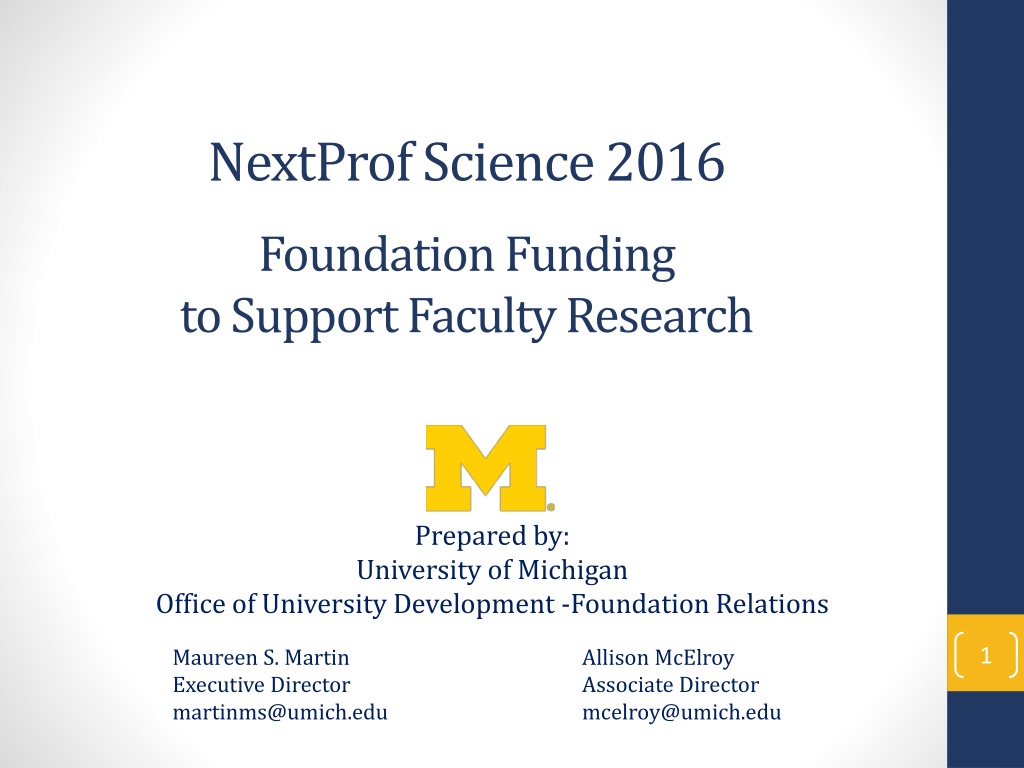

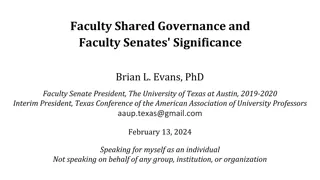

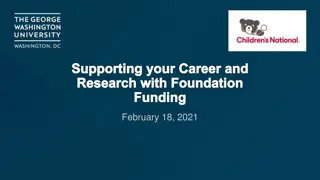
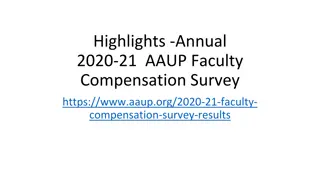
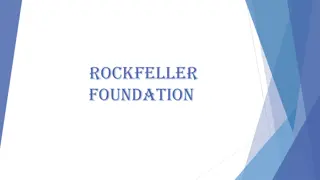
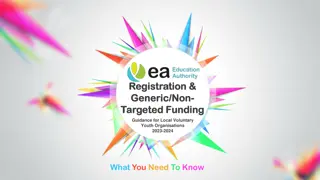
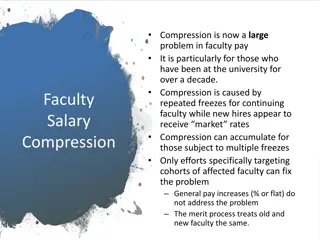
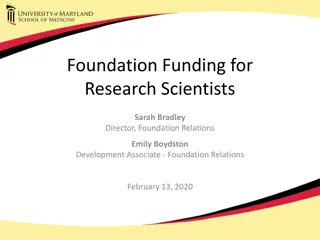
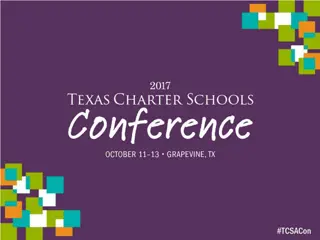
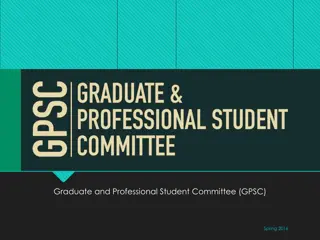
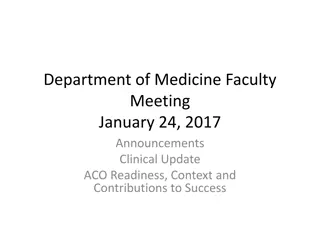
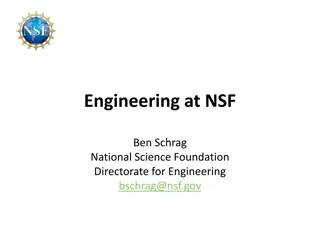
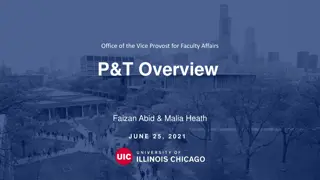
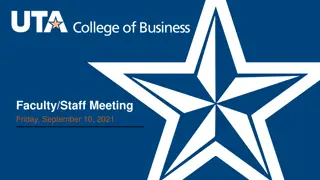
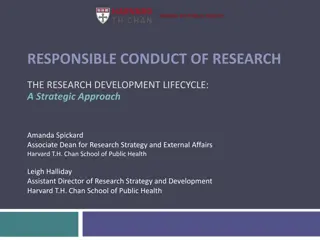
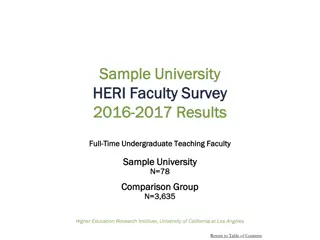
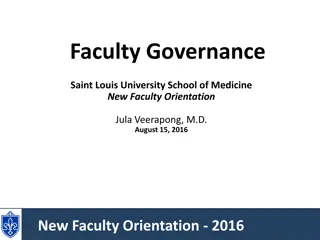
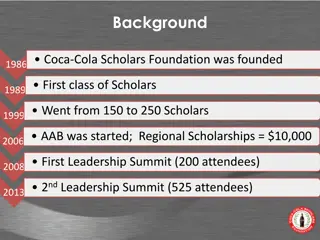
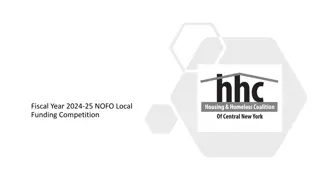
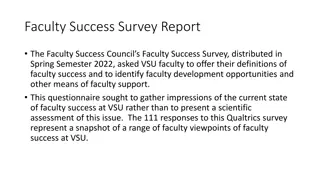
![Overview of the Faculty Senate at [Institution Name]](/thumb/233771/overview-of-the-faculty-senate-at-institution-name.jpg)
